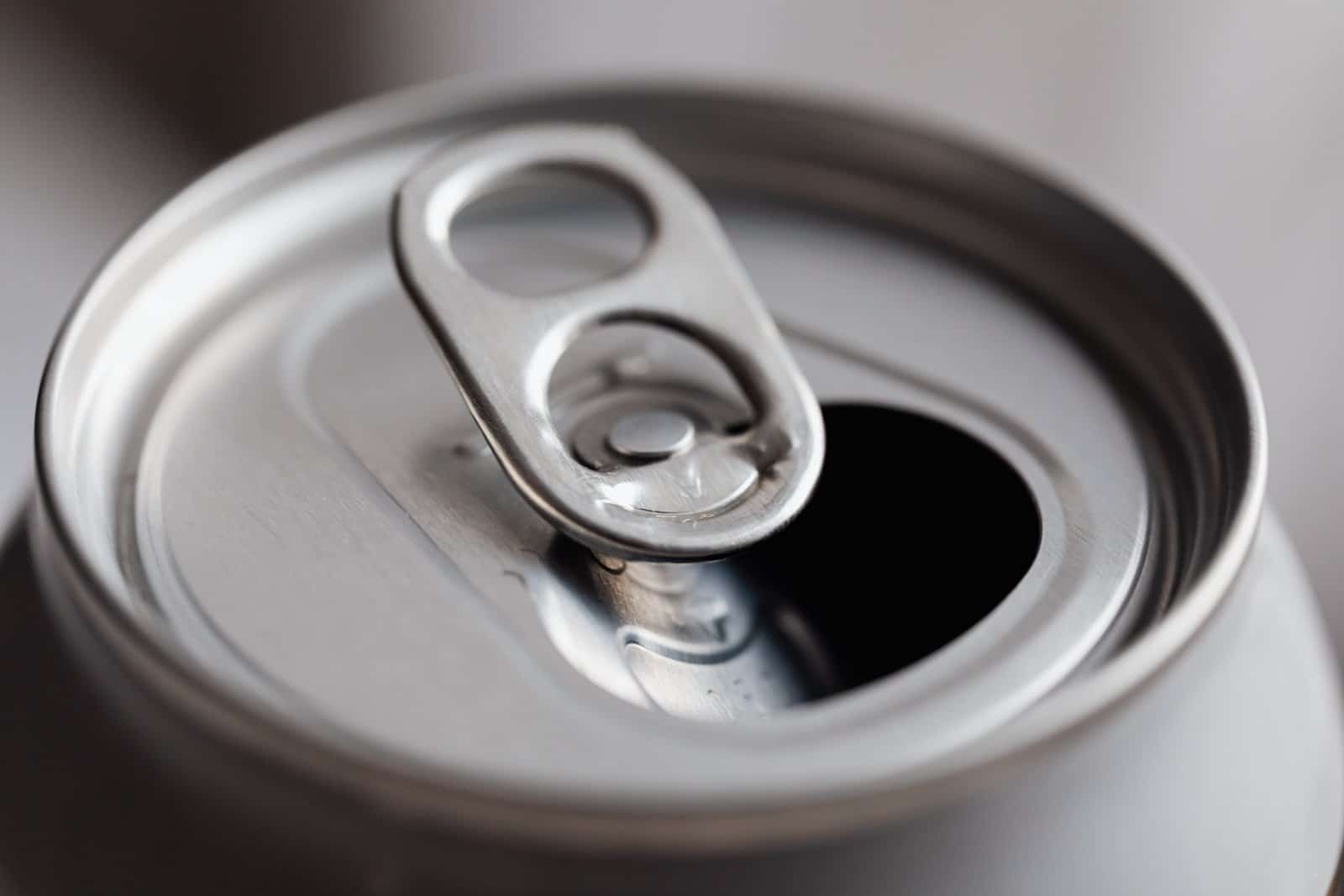
Aluminum; 5 Facts about The Amazing Metal Present in Our Daily Lives
The name “aluminum” comes from the prehistoric term “alumen,” which was used to refer to alum (potassium aluminum sulphate) (Latin, meaning bitter salt). Humphry Davy gave the element its initial name, aluminum, although it soon acquired the more widely used term in Europe, thanks to others. The American Chemical Society debated the matter in 1925 and ultimately chose to continue with aluminum because it was the popular term in the United States.
The aluminum metal is flexible and light. Due to a thin coating of oxidation that accumulates fast when exposed to air, it has a dull, silvery look. It is non-magnetic, non-sparking, and non-toxic as a metal.
There is just one non-radioactive naturally occurring isotope of aluminum, aluminum-27.
Aluminum, a member of the poor metal family of elements, is a silvery, ductile element typically found as ore bauxite. It is notable for its oxidation resistance (although aluminum is virtually always already oxidized), strength, and lightweight, unlike other metals. It is crucial to the global economy and is used in several sectors to create millions of goods. In addition to being critical in the aerospace sector, structural components made of aluminum are also vital in other fields of building and transportation where strength, durability, and lightweight are required.
Compared to other metals, aluminum is used more often. This is because pure aluminum may easily create alloys with numerous other elements, including copper, zinc, and magnesium.
A tiny layer of aluminum reflective coating is applied to the back of a float glass sheet to create almost all contemporary mirrors. Also covered in a fragile coating of aluminum are telescope mirrors.
Electrical transmission lines and packaging are further used (cans, foil, etc.).

It was widely used for domestic electrical wiring in the United States in the 1960s due to its excellent conductivity and affordable pricing compared to copper. However, issues with the functioning were brought about by its higher coefficient of thermal expansion and inclination to creep under constant sustained pressure, which finally led to the connection loosening; galvanic corrosion increased the electrical resistance.
The most recent advancement in aluminum technology is the creation of aluminum foam by mixing a compound (a metal hybrid) with molten aluminum that produces hydrogen gas. Before doing this, the molten aluminum must be thickened, which is accomplished by adding silicon carbide or aluminum oxide fibers. The result is a solid foam applied to space shuttles and traffic tunnels.
Aluminum and the Environment
It is a standard metal in the crust of the Earth, and it is estimated that it makes up 7.5% to 8.1% of the total composition of the crust. The pure form of it is rare. Aluminum, primarily present in the form of insoluble aluminum hydroxide, significantly contributes to soil characteristics.
It is a reactive metal that is challenging to separate from aluminum oxide, its source (Al2O3). It oxidizes quickly, and its oxide is an exceptionally stable molecule that, unlike rust on iron, does not flake off, making it one of the hardest metals on Earth to purify. It is difficult to produce because of its widespread use in so many different applications.
Corundum, a fine crystal form of aluminum oxide, makes several gemstones. Cobalt produces blue sapphires, and chromium has red rubies when traces of other elements are present. Both of these may now be created artificially with ease and at a low cost. Iron traces give topaz, an aluminum silicate, a golden color.
The aluminum industry now places a significant value on recovering this metal from scrap (through recycling). Over 20 million tons of new metal are produced each year industrially, and a similar quantity is recycled. Ore reserves are estimated to be 6 billion tons.

Aluminum is Part of Everyday Life.
Buildings made of Aluminum.
Buildings account for 40% of global energy use. Thus, there is significant room for energy savings. Using aluminum in buildings is a crucial step towards creating structures that save energy and generate it.
Transportation using Aluminum.
Another type of energy use is transportation, which accounts for around 20% of global energy demand in cars, trains, boats, and aircraft. The weight of a vehicle is a significant determinant of its energy consumption. Aluminum can cut a vehicle’s weight by 40% while maintaining its strength compared to steel.

Package made of Aluminum.
The production of food accounts for around 20% of human-made greenhouse gas emissions. Considering that one-third of all food produced in Europe is reportedly wasted, it is obvious how crucial food and beverage preservation methods—like employing aluminum—are to building a more sustainable world.
Sources for Aluminum
In today’s world, aluminum plays an essential role in many fields. From everyday products like ceramics, paper, lightbulbs, and glass to medicines, paints, explosives, and fuel additives, we utilize it in everything.
- Fruits and vegetables, which naturally contain food aluminum, are the primary source of our consumption. The estimated daily consumption in Europe is 3–10 milligrams, significantly below the threshold for overexposure. Our daily intake of aluminum (0.1 mg) from pans, cooking utensils, cans, and foil is negligible or unaffected.
- Water naturally contains aluminum, and we employ aluminum sulphate to clean water sources effectively. However, less than 1% of our daily aluminum consumption is typically through water.
- Medications Since the ancient Greeks, who employed aluminum compounds as an abrasive, for example, to control bleeding, people have utilized them for medical purposes. Currently, aluminum compounds are used to improve the efficacy of vaccinations, and aluminum hydroxide is used, among other things, to treat stomach ulcers.
- Due to their antiperspirant qualities, aluminum salts are frequently used in cosmetics for deodorants. In addition, cosmetic colors and thickening agents may also include aluminum.
Health Effects of Aluminum
One of the most often occurring compounds in the Earth’s crust is aluminum, one of the most regularly utilized metals. These factors have led to aluminum’s reputation as a toxic chemical. Nonetheless, when exposed to large amounts, it can still negatively affect one’s health. Ions are the damaging particles produced by the water-soluble version of aluminum. They are typically discovered in an aluminum solution with other ions, such as aluminum chlorine.
Food, air, and skin contact all have the potential to absorb aluminum. Serious health problems, such as the following, can result from prolonged exposure to high levels of aluminum Central nervous system damage, Dementia, Memory loss, Listlessness, and Extreme trembling.
There is a concern in some workplaces, such as mining, where aluminum may be present in the water. When aluminum particles are inhaled by workers in industries where aluminum is used during production operations, lung issues may result. In addition, aluminum can enter the body during renal dialysis and create complications for kidney patients.
Pulmonary fibrosis and lung damage have been linked to inhaling finely ground aluminum and aluminum oxide powder. The presence of silica and iron oxides in the air that is breathed in complicates this impact, also known as Shaver’s Disease. It may also be connected to Alzheimer’s disease.
After being consumed, aluminum travels via the bloodstream to the kidneys, where it is swiftly eliminated. Those with renal failure are an exception, as aluminum can accumulate and harm these individuals. Yet, clinicians who use water devoid of aluminum for dialysis know this issue.
However, chronic overexposure may have harmful health impacts, much like many other substances and components in our contemporary way of life. For example, animal studies have demonstrated that exposure to significant levels of aluminum might result in bone deformities or nervous system issues.
In this regard, it’s crucial to emphasize that no scientific evidence supports the notion that a healthy individual would have any adverse consequences from regular exposure to aluminum. Contrarily, aluminum offers considerable health advantages by acting as a secure barrier to germs and contamination during food preservation. Moreover, aluminum sulphates are used to filter water, and aluminum compounds are known to enhance the effects of immunizations and medications.
As long as you don’t have kidney failure or aren’t exposed to extended overexposure, primarily through the air, everyday exposure to aluminum is safe.

If you enjoyed learning about this stunning metal, why not check out more exciting facts about other metals: Uranium, Copper, Mercury, Silver, Platinum and Gold.
Why not subscribe to our LearningMole Library for as little as £1.99 per month to access over 2100 fun educational videos.


Leave a Reply